![What is an Electric Bike? [Beginners’ Guide]](http://www.iscooterglobal.co.uk/cdn/shop/articles/St.P-u2_d2c72bd5-7e39-414c-92ee-e93f9cf27842_{width}x.jpg?v=1753783095)
What is an Electric Bike? [Beginners’ Guide]
Electric bikes, or e-bikes, are revolutionising the way we travel, blending the familiar design of a traditional bicycle with the added boost of an electric motor to make cycling easier, faster, and more accessible. They are ideal for commuting, leisure rides, tackling hills, or carrying heavy loads, offering riders the flexibility to pedal with assistance or rely more on motor power when needed. In this guide, we’ll cover everything you need to know about electric bikes, including their purpose, advantages and disadvantages, different types, and the benefits they bring.
What Is An Electric Bike

Electric bikes are commonly known as an e-bike. It is a modern bicycle integrated with an electric motor and a rechargeable battery designed to assist the rider while pedaling. Unlike traditional bicycles, e-bikes provide an added boost of power! Making it easier to ride longer distances, tackle steep hills, and maintain higher speeds with significantly less physical effort.
The motor doesn’t replace pedaling but works hand-in-hand with it, engaging only when the rider pedals or, in some models, when a throttle is used. Importantly, e-bikes differ from mopeds or motorcycles—unlike fully motorized vehicles, e-bikes are intended to complement the rider’s pedaling effort, making cycling easier, faster, and more efficient.
Other terms for e-bikes can be electrically assisted pedal cycle (EAPC), or electrically power-assisted cycle. In the UK, e-bikes are available in a wide range of styles and configurations, but they generally fall into two main categories: (1) Pedal-assist bikes (pedelecs) and (2) Throttle-assisted bikes.
Despite these variations, all e-bikes retain the ability to be pedaled, which distinguishes them from mopeds or electric motorcycles.
E-bikes are powered by rechargeable batteries and typically have a motor-assisted speed limit ranging from 25 to 32 km/h (16 to 20 mph). However, high-performance models or known as speed pedelecs, can reach speeds of up to 45 km/h (28 mph) or more, depending on the model, motor output, and riding conditions.
What Is Pedal Assist On An Electric Bike?

In pedal-assist mode, riders enjoy the perfect balance of human effort and electric power, creating a riding experience that feels smooth, effortless, and intuitive. Once this mode is activated using the on/off button conveniently located on the handlebars, the electric motor seamlessly engages as soon as you begin pedaling, providing a gentle yet effective boost to complement your effort.
You can continue to switch gears just like on a traditional bicycle, adapting to changes in terrain for better torque on climbs or greater speed on flat stretches. This means you maintain full control over your ride while the motor quietly works in the background to help you tackle steep inclines, long commutes, and challenging routes with ease.
Most pedal-assist systems offer multiple assistance levels so you can fine-tune your riding experience. For example, the settings typically include:
-
Low (around 30%) – Adds a modest boost for light assistance, perfect for flat terrain or when you want more of a workout.
-
Medium (around 60%) – Provides a balanced level of support for mixed terrain and moderate effort, ideal for everyday riding.
-
High (around 100%) – Maximizes assistance, essentially doubling your pedaling power for tackling steep climbs or when you want to arrive at your destination without breaking a sweat.
Purpose Of Having An E-bike
Electric bikes (e-bikes) are innovative bicycles equipped with an integrated electric motor and rechargeable battery, designed to make cycling easier, more efficient, and more enjoyable. This added boost allows riders to travel further and faster with less fatigue, making e-bikes an appealing choice for both casual riders and those who rely on cycling as a primary mode of transportation.
E-bikes serve a variety of purposes, they can be used in daily commuting, recreational riding, fitness, and even utility tasks! This makes e-bikes particularly valuable for people of all ages, fitness levels, and physical abilities, including those who may find traditional cycling challenging.
Advantages and Disadvantages Of An E-bike

Riding an electric bike offers many of the same health benefits as traditional cycling, with the added advantage of motor assistance. More than fitness benefits, the advantages of an E-bike are as follows:
-
Improved Fitness: Pedaling means engaging muscles and improving cardiovascular health. Many riders actually get fitter on e-bikes because they ride longer and more frequently than on traditional bikes.
-
Adjustable Effort: Riders can increase or decrease motor assistance based on their needs—whether for a challenging workout or a sweat-free commute.
-
Practical for Commuting & Utility: Great for daily transportation, replacing car trips and reducing fuel and maintenance costs. It’s also useful for hauling groceries, gear, or even children without excessive effort.
-
Eco-Friendly: Replacing short car trips with e-bike rides reduces carbon emissions and contributes to cleaner urban environments.
Despite their many advantages, E-bikes also have their own fallback– nothing’s perfect as they say.
-
Higher Weight: E-bikes are heavier than traditional bicycles due to their motor and battery. This can make it more difficult to carry up stairs or move in tight spaces.
-
Handling Differences: The added weight can affect bike handling, especially at lower speeds. However, modern e-bike designs have greatly improved geometry and ride stability.
-
Cost & Storage Needs: E-bikes are generally more expensive than non-electric bikes. They require secure storage and access to a charging point. (A removable battery is helpful if charging near storage isn’t possible.)
Types of Electric Bikes
Electric Hybrid Bikes
Designed for versatility, featuring flat handlebars for an upright riding position and chunky, puncture-resistant tires that handle both paved roads and light trails with ease. These features make them ideal for commuting, shopping trips, and relaxed leisure rides, providing comfort, stability, and practicality for everyday use.
Electric Mountain Bikes (e-MTBs)
Built for rugged terrain, typically equipped with a powerful, high-torque motor to help conquer loose, steep off-road climbs and navigate challenging obstacles. Their robust frames, wide tires, and advanced suspension systems make them the perfect choice for adventurous riders tackling technical trails and unpredictable surfaces.
Electric Road Bikes
This type of an E-bike prioritizes speed and efficiency. They come with drop handlebars for an aerodynamic riding position and are often designed to be relatively lightweight (for an e-bike), which improves handling and climbing performance. These bikes are best suited for long-distance rides, fast-paced training sessions, and hilly routes where efficiency matters.
Electric Gravel Bikes
They combine the speed of a road bike with the durability of an off-road machine. They feature wider, grippy tires for improved traction on dirt and gravel paths, along with drop handlebars for better road handling and endurance riding. This makes them a great option for riders who want to confidently transition between paved roads and rougher trails without compromise.
Electric Folding Bikes
This type offers maximum convenience, with compact, foldable frames that can easily be carried onto public transport, stored under a desk, or packed away in small living spaces. These are especially popular among urban commuters who mix cycling with buses, trains, or subways as part of their daily travel.
Electric Cargo Bikes
Designed for utility, it features extended frames and integrated racks or cargo compartments to carry heavy loads, groceries, children, or even business deliveries. They are a practical alternative to a car or van for short-distance errands and urban transportation, making them an eco-friendly choice for families and businesses alike.
Whichever type of electric bike you choose, remember that it’s likely to be a significant investment.
How Do Electric Bike Works

Most e-bikes use many of the same core components as regular bikes—such as frames, wheels, gears, and brakes—so the transition from a standard bike to an electric one feels natural and intuitive for riders of all skill levels.
The electric system on an e-bike is not intended to replace pedaling entirely; rather, it is designed to augment your own pedaling power. By reducing the strain of pedaling, e-bikes allow riders to travel longer distances, tackle tougher routes, and arrive at their destinations less fatigued.
Electric Bike Components
The key to any well-designed electric bike is ensuring that all its components work seamlessly together. The three primary elements—the battery, motor, and display—form the core of the e-bike system, each playing a vital role in delivering a smooth, efficient, and customizable riding experience.
Electric Bike Motors

The motor converts this stored energy into mechanical assistance, directly powering the drivetrain. This motor-driven boost supports your pedaling, making it significantly easier to climb steep hills, cover longer distances, and maintain higher speeds with less effort. Depending on the e-bike’s design, the motor may be located in the hub, the mid-drive (crank area), or other strategic positions to optimize performance.
Electric bike motors can be positioned in different locations, each offering unique benefits for performance and riding style. The three main types of motor placements are front hub motors, rear hub motors, and mid-drive motors.
-
Front hub motors are mounted in the front wheel hub, providing a straightforward design that pulls the bike forward. They are typically lighter, simpler, and often used in more affordable or commuter-oriented e-bikes.
-
Rear hub motors are positioned in the back wheel hub, pushing the bike forward in a way that feels more like traditional cycling. They often provide better traction and are ideal for riders who want a natural, stable feel, particularly for city riding or light off-road use.
-
Mid-drive motors are located near the bike’s crankset (bottom bracket), directly powering the drivetrain. This placement delivers a more balanced weight distribution and a highly efficient transfer of power, making mid-drive systems especially popular for climbing steep hills, tackling varied terrain, and long-distance rides.
The primary function of any e-bike motor is to provide torque—the rotational force that assists your pedaling. The more advanced the motor, the higher the torque output, which translates to greater power, faster acceleration, and improved climbing ability. Simply put, higher torque means your e-bike can handle tougher conditions and deliver a stronger, smoother boost when you need it most.
Electric Bike Sensors

The sensor on an electric bike is a crucial component of the pedal-assist system, as it determines how and when the motor engages to support your pedaling. There are two main types of sensors used in e-bikes: cadence sensors and torque sensors, each offering a distinct riding experience.
-
Cadence sensors: the simpler of the two and work by detecting when you start pedaling. Once they sense movement, the motor immediately provides assistance, giving you a steady boost as soon as you turn the pedals. This type of sensor delivers consistent power output, making it ideal for riders who want a relaxed and predictable level of support—perfect for commuting or casual riding.
-
Torque sensors: are more advanced and responsive. Instead of just detecting movement, they measure how hard you are pedaling and adjust the motor’s power output accordingly. This means the bike provides just the right amount of assistance based on your effort—offering more power when you push harder (e.g., climbing a hill) and less when you ease off. This creates a smoother, more natural riding experience, especially helpful for maneuvering in traffic, tackling varied terrain, or maintaining speed control.
Electric Bike Batteries

The battery serves as the energy source, storing the electrical power needed to run the motor. Modern e-bike batteries are rechargeable, high-capacity units designed to provide consistent performance over long distances, enabling riders to confidently tackle commutes, leisure rides, or extended journeys without worrying about running out of power.
Electric bike batteries can be positioned in different locations on the bike, typically depending on the frame type, size, and overall design. The most common placements are integrated into the downtube, mounted on the rear rack, or attached externally to the frame, with each option offering different benefits in terms of balance, accessibility, and aesthetics.
The make, model, and capacity of the battery influence both performance and charging time. While some smaller-capacity batteries can recharge more quickly, larger, high-capacity units may take a bit longer. On average, most e-bike batteries take around five to six hours to fully charge from empty, though fast-charging options are available for certain models.
Charging your e-bike battery is straightforward—it works much like charging a mobile phone. Simply plug the charger into a standard wall outlet and connect it to the battery. Many batteries can also be removed from the bike, making it convenient to charge them indoors, especially if you store your bike in a garage, shed, or outside space without direct access to power.
What Is The Benefit Of An Electric Bike?
-
Enhanced Mobility & Accessibility: E-bikes make riding possible for a wider range of people, including those who may struggle with traditional cycling. They enable longer rides, faster travel, and help riders arrive at their destination less tired or sweaty.
-
Commuting & Transportation: They provide a practical, cost-effective alternative to cars for daily travel—saving time, fuel, and maintenance costs while helping reduce traffic congestion and emissions.
-
Exercise & Recreation: E-bikes still provide healthy physical activity, but with adjustable levels of motor assistance, riders can choose how much effort to put in. This makes cycling more approachable and enjoyable, encouraging more frequent and longer rides.
-
Environmental Benefits: By replacing short car trips, e-bikes significantly reduce carbon emissions and contribute to a cleaner environment.
-
Hauling & Utility: With electric assistance, riders can carry cargo, groceries, or even children more easily, expanding the bike’s usefulness for everyday tasks.
Lifespan Of An Electric Bike Battery

An e-bike battery is one of the most crucial components of an electric bicycle, and its lifespan typically ranges from 3 to 5 years or roughly 500 to 1,000 full charge cycles before it begins to lose significant capacity and requires replacement.
However, this lifespan is not fixed—it can vary greatly depending on several factors, including how often and how far you ride, your charging habits, the type of battery, and even the environmental conditions in which you store and use the bike.
For instance, frequent deep discharges (fully draining the battery before recharging) or improper storage in extremely hot or cold environments can shorten its life. On the other hand, good charging practices—such as avoiding overcharging, storing the battery in a cool, dry place, and keeping it partially charged when not in use for long periods—can help maximize its lifespan.
It’s also worth noting that as a battery ages, you may notice a gradual decrease in range and overall performance. While this is normal, maintaining proper care and regular maintenance can delay the decline and keep your e-bike running efficiently for years.
Best Battery For An Electric Bike
The best type of E-bikes batteries are the ones that are designed for long-lasting rides, quick charging, but still offering maximum efficiency. With iScooter batteries– whether you are commuting, exploring, or cruising the city, iScooter batteries keep you moving longer.
Best Lock For An Electric Bike

Our high-security electric bike locks are designed for maximum protection, durability, and ease of use—giving you peace of mind wherever you park. Built with heavy-duty materials, smart locking technology, and weather-resistant design, iScooter locks keep your e-bike safe from theft while staying lightweight and portable for daily use.
Motor For An Electric Bike

The ideal motor for an electric bike depends on several key factors, including your riding style, the type of terrain you’ll encounter, and your performance expectations. When selecting an e-bike motor, it’s essential to consider the motor placement, as it greatly impacts handling, power delivery, and overall ride experience.
In short, hub motors are an excellent choice for urban riders seeking cost-effective, low-maintenance solutions, while mid-drive motors are perfect for those tackling hilly routes, off-road trails, or looking for top-tier performance.
Best Wattage For An Electric Bike
The ideal wattage for an electric bike motor depends on several factors, including your intended use, body weight, typical riding terrain, and local e-bike regulations. Motor power directly affects how much assistance you receive, particularly when accelerating, climbing hills, or carrying extra weight.
-
250W Motors – Commonly found on commuter and city e-bikes, these motors are lightweight, efficient, and perfect for flat urban environments. They provide enough assistance for everyday riders who prioritize battery efficiency and legal compliance in regions with strict wattage limits (such as the EU and the UK).
-
350W–500W Motors – These offer a balance between efficiency and performance, making them great for mixed-terrain riding or riders who need extra power for moderate hills and heavier loads without significantly compromising range.
-
500W–750W Motors – Ideal for steeper climbs, off-road trails, and heavier riders, these motors deliver substantial torque and acceleration.
-
750W+ Motors – High-powered motors are built for challenging terrains, cargo hauling, and performance-oriented riding. They provide maximum torque and speed, but often come with higher costs, increased battery consumption, and potential regulatory limitations.
It’s important to note that local laws and e-bike classifications often dictate the maximum motor wattage allowed. For instance, in many areas, 250W–500W motors are the legal limit for pedal-assist bikes, while higher-powered e-bikes may be regulated differently or require special licensing.
Popular Electric Bike Models From iScooter
|
Best for Short City Commutes & Easy Storage |
Best for Long-Distance Riders & Comfort Seekers |
Best for Balanced City & Suburban Riding |
Best for Versatility & Daily Use |
Best City Electric Bike for Daily Commuting |
Best For City Commute & Light Trail Riders |
|
|
Image |
|
|||||
|
Model |
||||||
|
Price |
£338.99 |
£539.99 |
£397.99 |
£488.99 |
£569.99 |
£525.99 |
|
Motor |
Peak 500W |
Peak 500W |
Peak 500W |
Peak 500W |
Peak 500W |
Peak 500W |
|
Max Range |
40 Miles |
65 Miles |
50 Miles |
55 Miles |
55 Miles |
60 Miles |
|
Max Speed |
15.5 MPH Default, Unlock to 20 MPH |
15.5 MPH Default, Unlock to 20 MPH |
15.5 MPH Default, Unlock to 18.6 MPH |
15.5 MPH Default, Unlock to 20 MPH |
15.5 MPH Default, Unlock to 20 MPH |
15.5 MPH Default, Unlock to 22 MPH |
|
Default Speed |
6.2/9.3/15.5 MPH |
3.7/6.2/9.3/15.5 MPH |
6.2/9.3/15.5 MPH |
6.2/9.3/15.5 MPH |
3.7/6.2/9.3/12.4/15.5 MPH |
3.7/6.2/9.3/12.4/15.5 MPH |
|
Unlock Speed |
9.3/15.5/20 MPH |
6.2/9.3/15.5/20 MPH |
9.3/15.5/18.6 MPH |
9.3/15.5/20 MPH |
6.2/9.3/12.4/15.5/20 MPH |
6.2/9.3/12.4/15.5/22 MPH |
|
Battey |
36V 7.8Ah (280.8Wh) |
36V 13Ah (468Wh) |
36V 7.8Ah (280.8Wh) |
36V 10.4Ah(374.4Wh) |
36V, 10.4Ah (374.4Wh) |
36V, 10.5Ah (378 Wh) |
|
Sensor |
Cadence sensor |
Cadence sensor |
Cadence sensor |
Cadence sensor |
Cadence sensor |
Cadence sensor |
|
Pedal Assist |
4-Level Speed Assist |
5-Level Speed Assist |
4-Level Speed Assist |
4-Level Speed Assist |
7-Level Speed Assist |
7-Level Speed Assist |
|
Suspension |
Rear Suspension |
Adjustable Front Spring Suspension Fork+Seat Suspension |
Adjustable Front Spring Suspension Fork |
Adjustable Front Suspension Spring Fork |
Adjustable Front Spring Suspension Fork |
Advanced Front Suspension Fork |
|
Brake |
Front and rear disc brakes |
Front and rear disc brakes |
Front and rear disc brakes |
Front and rear disc brakes |
Front and rear disc brakes |
Mechanical brakes |
|
Tire |
14*1.95" Pneumatic Tires |
26*1.95" Chaoyang Pneumatic Tires |
16*1.95" Pneumatic Tires |
16*2.15" Pneumatic Tires |
26" × 1.95" Pneumatic |
26" × 1.95" Pneumatic |
|
Saddle |
Urban comfort ergonomic seat |
Urban comfort ergonomic seat |
Urban comfort ergonomic seat |
Urban comfort ergonomic seat |
Urban comfort ergonomic seat |
Breathable ergonomic sport cushion seat |
|
Headlight |
High output integrated LED, adjustable angle |
High output integrated LED, adjustable angle |
High output integrated LED, adjustable angle |
High output integrated LED, adjustable angle |
High output integrated LED, adjustable angle |
High output integrated LED, adjustable angle |
|
Tail Light |
Wiring LED light |
Wiring LED light |
button battery |
button battery |
button battery |
Rear LED |
|
Rear Rack |
None |
Supported |
Supported |
Supported |
Supported |
Suppoted |
|
Fenders |
Front and rear full coverage |
Front and rear full coverage |
Front and rear full coverage |
Front and rear full coverage |
Front and rear full coverage |
Front and rear full coverage |
|
Charger |
42V 1.5Ah |
42V 2Ah |
42V 3Ah |
42V 2Ah |
42V 2Ah |
42V 2Ah |
|
Frame |
Alloy steel folding frame |
Iron frame |
Alloy steel folding frame |
Alloy steel folding frame |
Iron Frame |
Alloy steel frame |
|
Water Resistance |
IP65 |
IP65 |
IP65 |
IP65 |
IP65 |
IP65 |
|
Load Capacity |
264 lbs (120 kg) |
264 lbs (120 kg) |
264 lbs (120 kg) |
264 lbs (120 kg) |
264 lbs (120 kg) |
330 lbs (150 kg) |
|
Seat Height |
Adjustable |
Adjustable |
Adjustable |
Adjustable |
Adjustable |
Adjustable |
|
Rider Height |
4'9" ~ 6'1" (150cm ~ 185cm) |
5'3" ~ 6'3" (160cm ~ 192cm) |
4'9" ~ 6'1" (150cm ~ 185cm) |
5'3" ~ 6'3" (160cm ~ 192cm) |
5'3" ~ 6'4" (150cm ~ 192cm) |
5'3" ~ 6'5" (160cm ~ 195cm) |
|
Bike Weight |
51.4 lbs (23.2 kg) |
59.5lb (27kg) |
53.9 lbs (24.5 kg) |
58.42 lbs (26.5 kg) |
61.7 lbs (28 kg) |
45.1 lbs (20.5kg) |
Conclusion
An electric bike (e-bike) is a modern bicycle equipped with an electric motor and rechargeable battery that assists your pedaling, making cycling easier, faster, and more efficient.
Whether used for commuting, recreation, or tackling hills and longer distances, e-bikes provide a perfect balance between exercise and convenience. They’re eco-friendly, cost-effective, and accessible for riders of all ages and fitness levels, making them an excellent alternative to cars for short and medium-distance travel.
If you’re wondering what an electric bike is, it’s the future of cycling — combining the joy of traditional biking with the power of electric assistance.
FAQs
What is the point of an electric bike?
E-bikes let you ride farther and faster, carry heavier loads with ease, and even replace a car for short trips or daily commutes.
Is an electric bike good?
Yes, electric bikes are an excellent choice for riders of all levels. They make cycling easier and more accessible, offering health benefits, faster commutes, and a greener alternative to driving — all while still providing the enjoyment and exercise of traditional biking.
Do you still have to pedal on an electric bike?
Yes! E-bikes are a modern bicycle integrated with an electric motor and a rechargeable battery designed to assist the rider while pedaling.
Can I ride an electric bike without pedaling uk?
In the UK, you can only ride an electric bike without pedalling if it has a twist-and-go throttle that can propel the bike without pedalling up to 3.7 mph (6 km/h)—beyond that speed, the motor must assist only when you're pedalling. Fully throttle-powered e-bikes (that work without pedalling at all speeds) are classed as motor vehicles and require registration, insurance, and a driving licence.
What is a pas on electric bike?
PAS (Pedal Assist System) on an e-bike provides motor support while you pedal, making rides easier and less tiring. Unlike throttle-only e-bikes, the motor works only when you pedal.
What is the average cost of an electric bike?
In the UK, electric bikes (e-bikes) typically cost between £1,000 and £4,000. Budget models can start from around £600, while high-end e-bikes with premium features can exceed £10,000. Prices vary depending on factors like battery size, motor power, frame quality, suspension, and extras such as built-in lights or GPS.
What is the max speed of an electric bike?
In the UK, electric bikes (EAPCs) can provide pedal assistance up to a maximum speed of 15.5 mph (25 km/h). If an e-bike assists you beyond this limit, it’s classed as a “speed pedelec” (s-pedelec) and is treated like a moped or motorcycle, meaning you’ll need to register it, get insurance, and wear a helmet.
iScooter E Scooter Collections:
Electric Scooter | Kids Electric Scooter | Electric Scooter for Adults | Electric Scooter with Seat | Off-Road Electric Scooter | Foldable Electric Scooter | Girls Electric Scooter | 1000W Electric Scooter | 2000W Electric Scooter | Boys Electric Scooter | Dual Motor Electric Scooter | Big Electric Scooter | Electric Scooter with Suspension | Lightweight Electric Scooter | Commuter E-Scooters | 3 Wheel Electric Scooter
iScooter E Bike Collections:
Foldable Electric Bike | Affordable Cheap Electric Bike | Electric Bike for Adults | Electric Motor Bikes | Trek Electric Bike | Fastest Electric Bike | Electric Road Bike | Full Suspension Electric Mountain Bike | Giant Electric Bike | Womens Ladies Electric Bike | Mens Electric Bike | Electric Bike with Throttle | Electric Gravel Bike | Electric Mountain Bike UK | Fat Tyre Electric Bike | Electric Hybrid Bike | Electric Motorised Bike | Electric Push Bike | 1000W Electric Bike | Cool Electric Bikes | Electric Off Road Bike | Pedal Assist Electric Bike | Good Electric Bikes | Small Electric Bike | Trek Electric Mountain Bike | 2000W Electric Bike | Full Suspension Electric Bike | Mini Electric Bike | Road Legal Electric Bike | Step Through Electric Bike
👍 Buying Guide | 🚴♂️ Riding Guide
📋 Feature Guide | ❓ Common problem
Product category
Electric Scooter
Cheap Electric Scooters for Adults | Fastest Electric Scooter | Kids Electric Scooter | Mini Electric Scooter































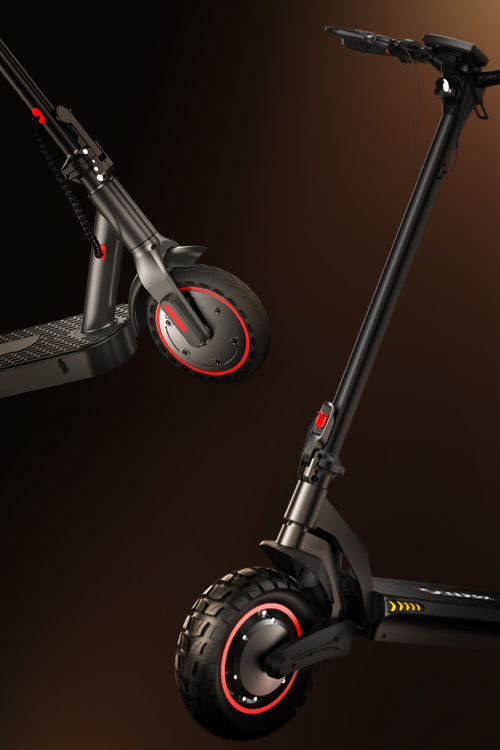
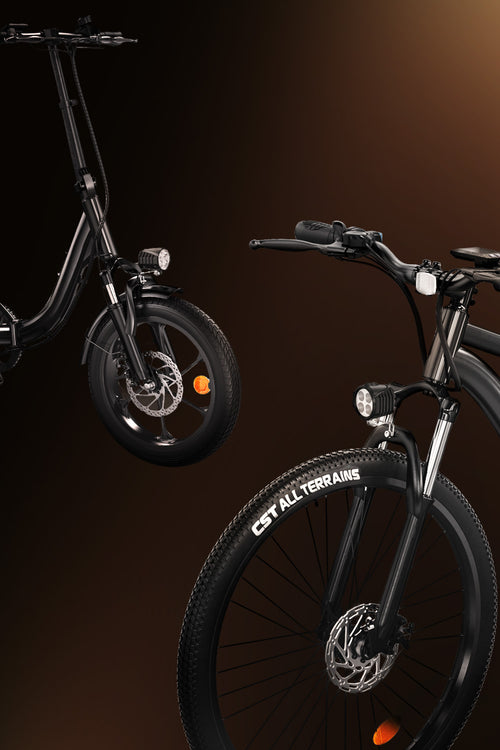
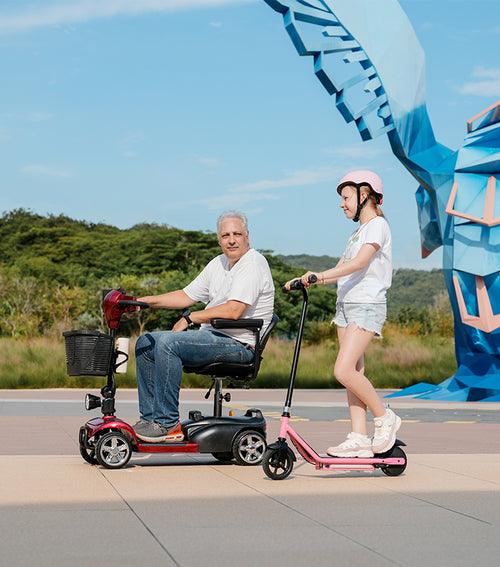









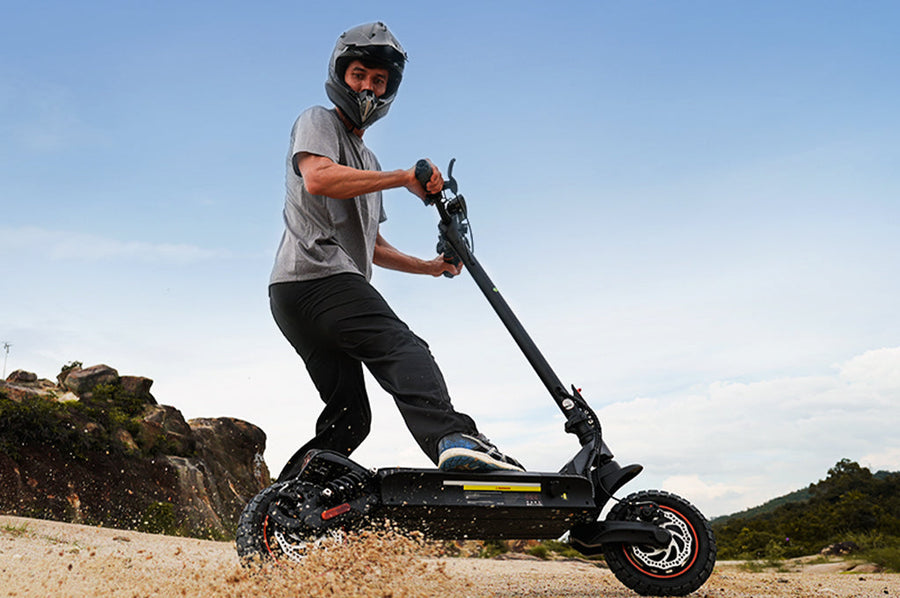



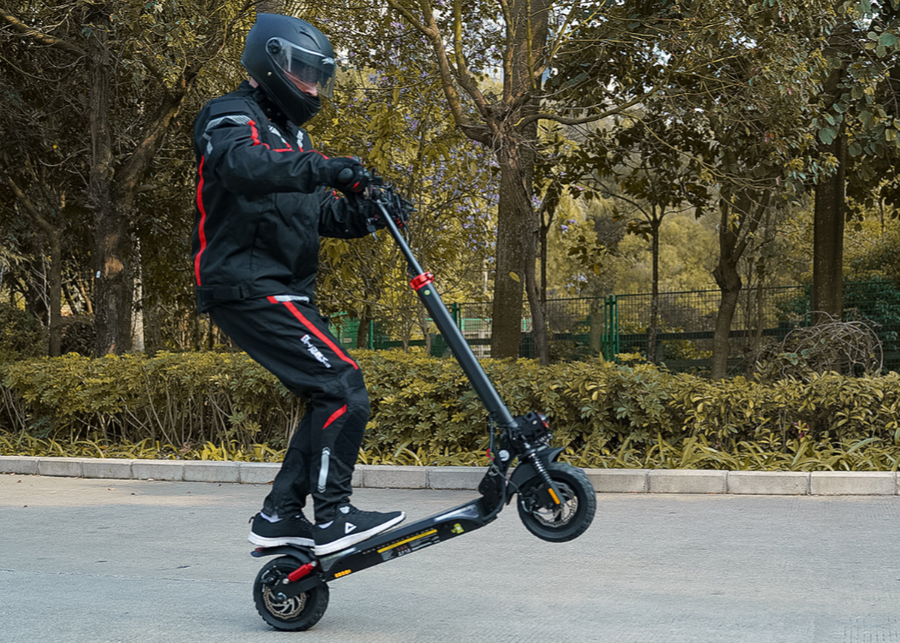
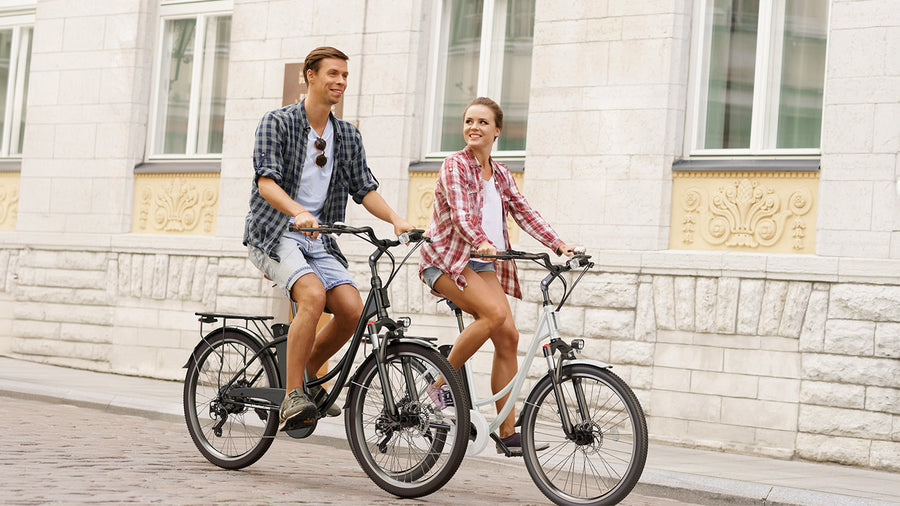
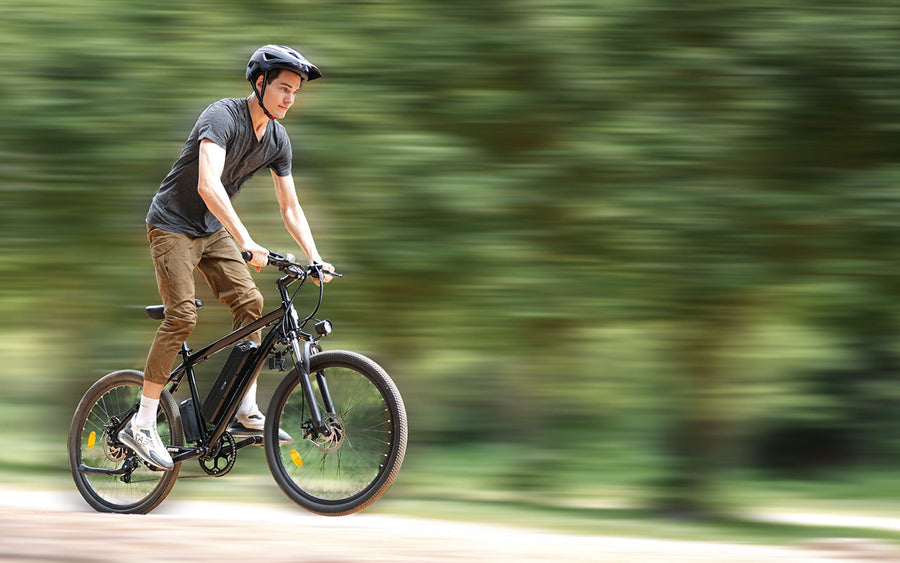
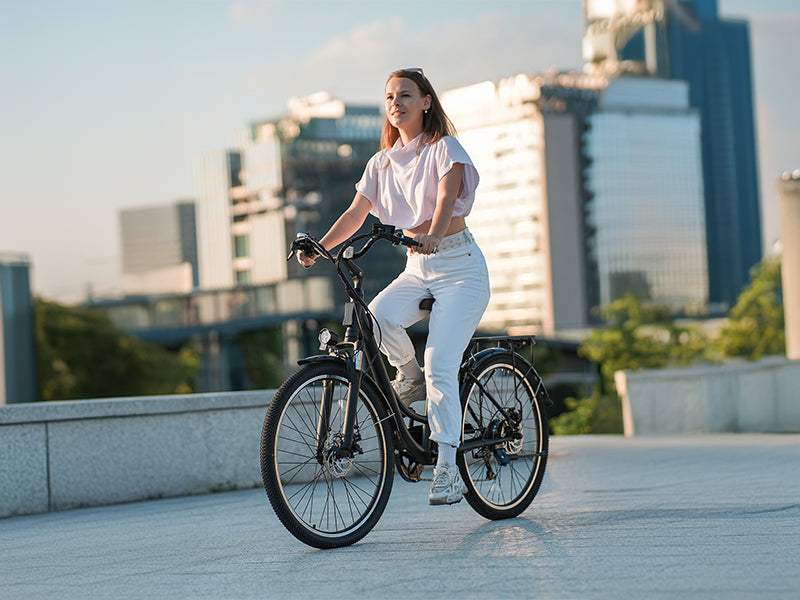
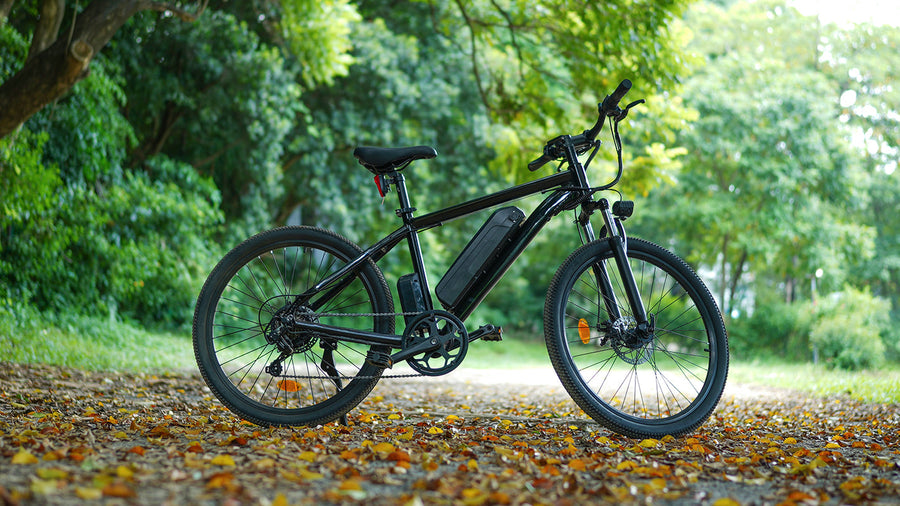
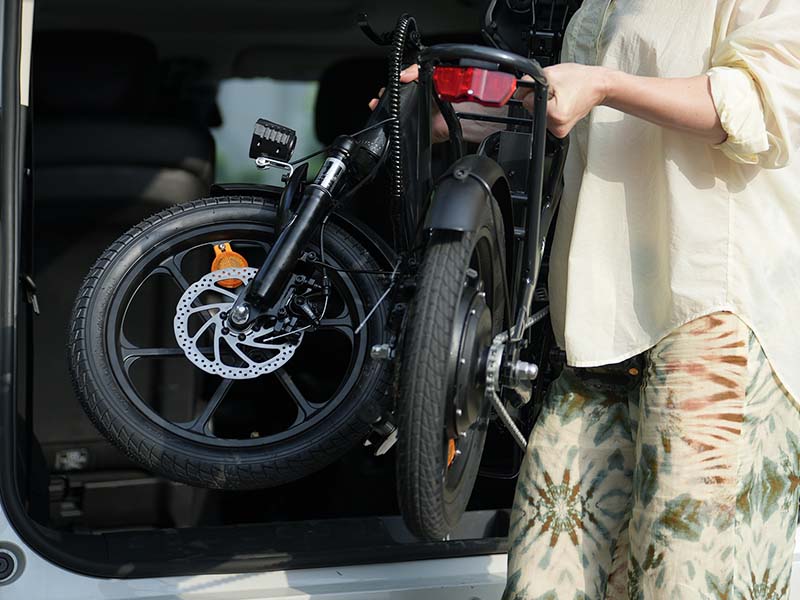
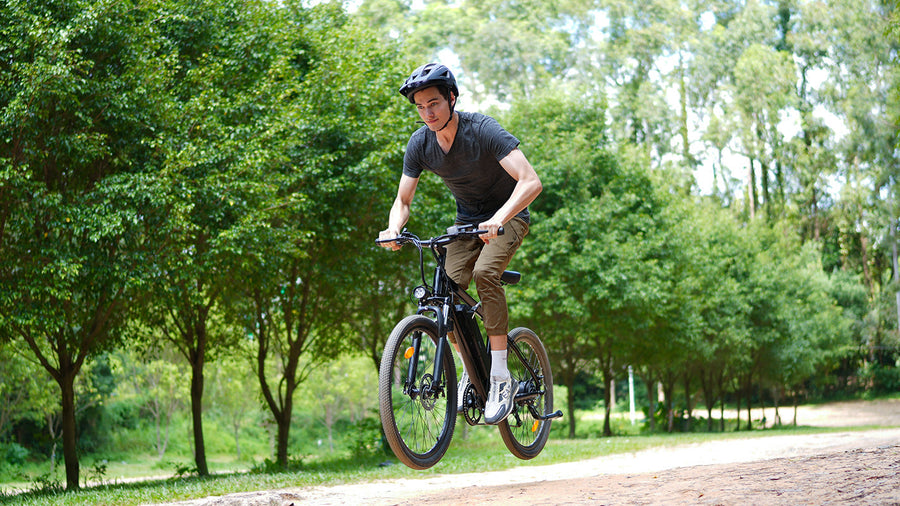









Article tags :
Leave us a message